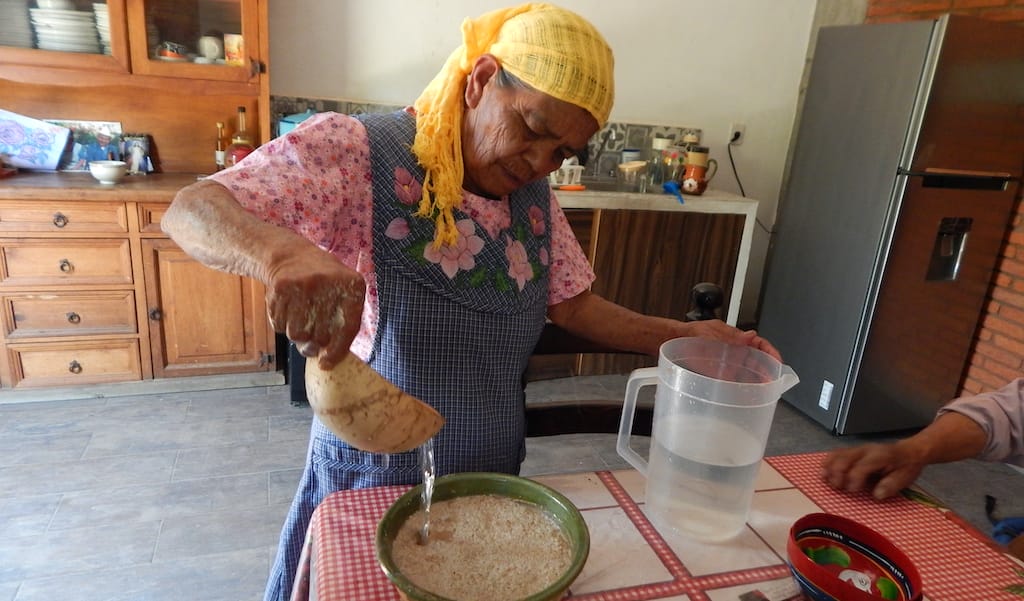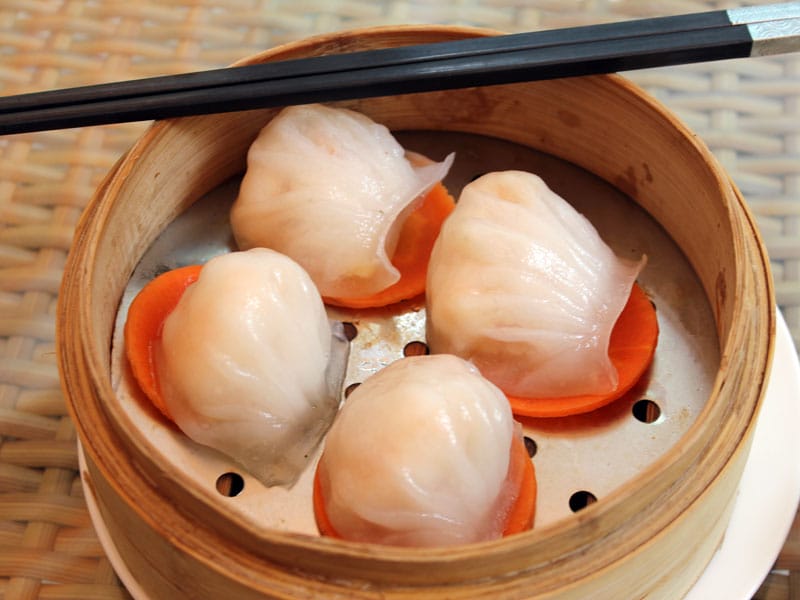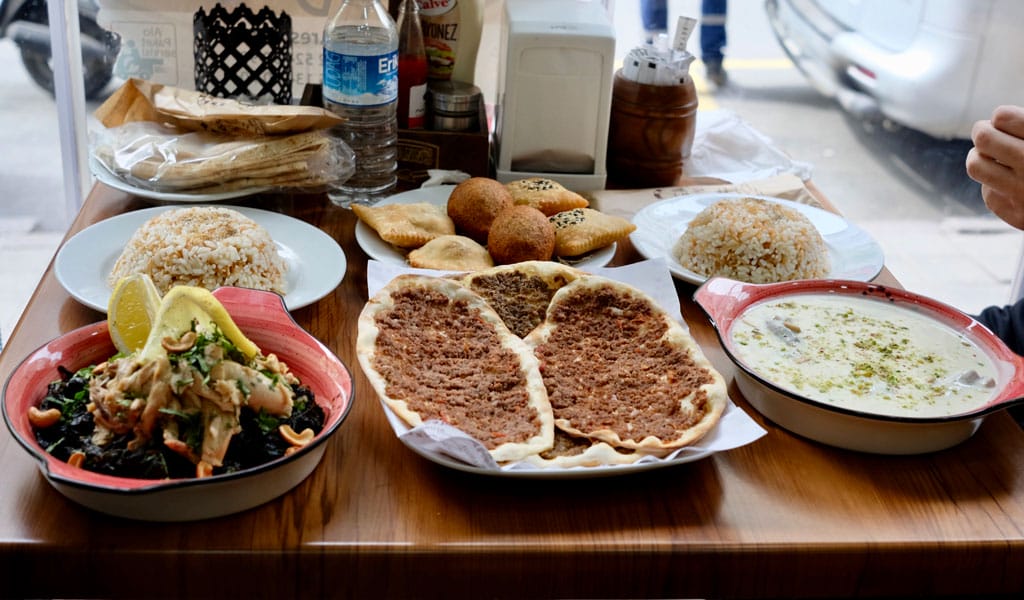It’s not yet 11 a.m. on a May morning in Oaxaca City – typically the hottest month in this midsized capital of the southwest Mexican state – and the day is already fixing to be a scorcher. At this moment, we’re padding the streets of Oaxaca’s bustling downtown market district, and we can feel the heat radiating off the cement below our feet. Deciding the morning’s errands will have to be put on pause, we duck into one of the main entrances to the famed Benito Juárez market, where we know we’ll find Valentina and a big, brimming jícara – a hollowed-out gourd used as a no-waste drinking vessel – of tejate.
We navigate past little stalls where vendors hawk such varied items as big, knotted balls of the milky, melty cow’s cheese known as quesillo; sweet, yeasty pan dulce sprinkled with colored granulated sugar; and big, round tortillas in two styles: soft and pliable (blandas) and crispy and crunchy (tlayudas). And there’s Valentina, presiding over the deep clay vessel of the tejate we’ve come looking for. Grabbing one of the distinctive red-and-white-painted jícaras that’s so closely associated with this cherished Oaxacan beverage, she takes a simpler, natural jícara in her other hand and uses it to scoop us up a serving, pouring the drink from above with seasoned flair.
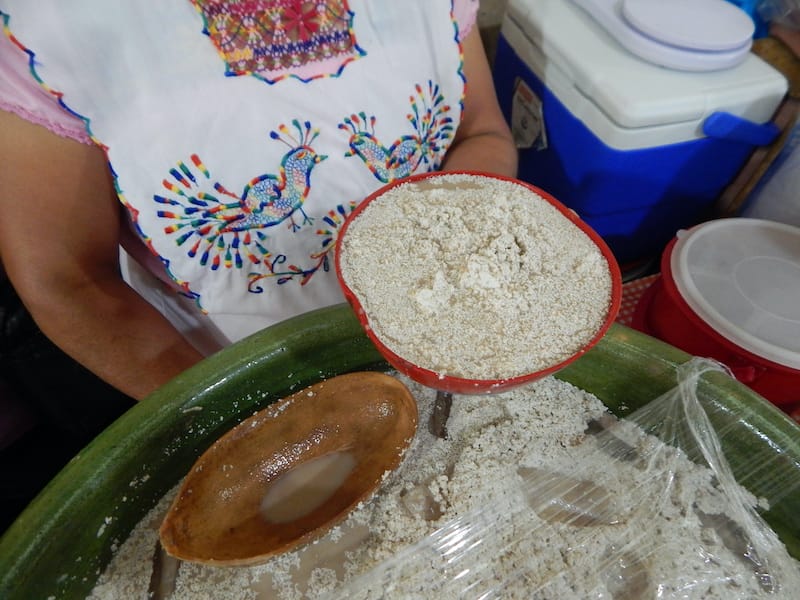
Valentina hands us our tejate, and before enjoying this storied prehispanic cooler, we take a second to admire it. At the surface of the pale brown liquid, big, frothy blobs of the white fat called nata, or cream, bob like icebergs, and the tejate is highly aromatic, smelling chocolatey, toasty, and floral all at once. The first sip of tejate immediately cools the palate and serves as a reminder of how tejate is like two drinks in one: the thin, cacao-laced liquid flooding past the teeth first, to be followed by the thick, creamy, semisolid nata.
Valentina Pérez Rodriguez, 49, is the creator of this particular tejate, and she has been serving the beverage at her post in Benito Juárez for the past 31 years, since she inherited the stall, at the age of 18, from her mother-in-law. “We refer to tejate as the drink of the gods,” Rodriguez tells us as she explains the beverage’s origins.
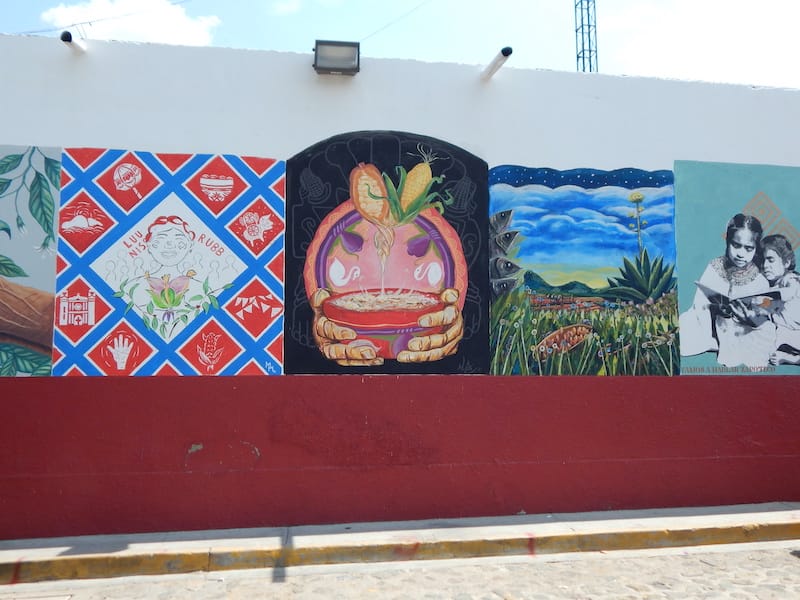
Traced back to Oaxaca some 300 years before the Spanish conquest, tejate is a unique and thoroughly local blend of five ingredients: cooked corn kernels; the pit of a sweet, orange-fleshed fruit called mamey; cacao; and the dried flowers of the rosita de cacao tree. Those latter three ingredients are toasted on the ancient clay griddle known as a comal before being ground into a fine paste along with the corn, which is then slowly and deliberately diluted with water as the tejate-maker – traditionally always a woman – kneads the water into the paste right inside the big clay pot the drink will be served in, provoking the fatty mamey pit to release its rich, cloudy nata. Once the drink is sufficiently liquid, it’s loaded with ice to keep it cold, and covered with a cloth – or, nowadays, with plastic wrap – to keep insects at bay. It can be enjoyed as-is, or, more commonly, with a generous glug of simple syrup to sweeten it.
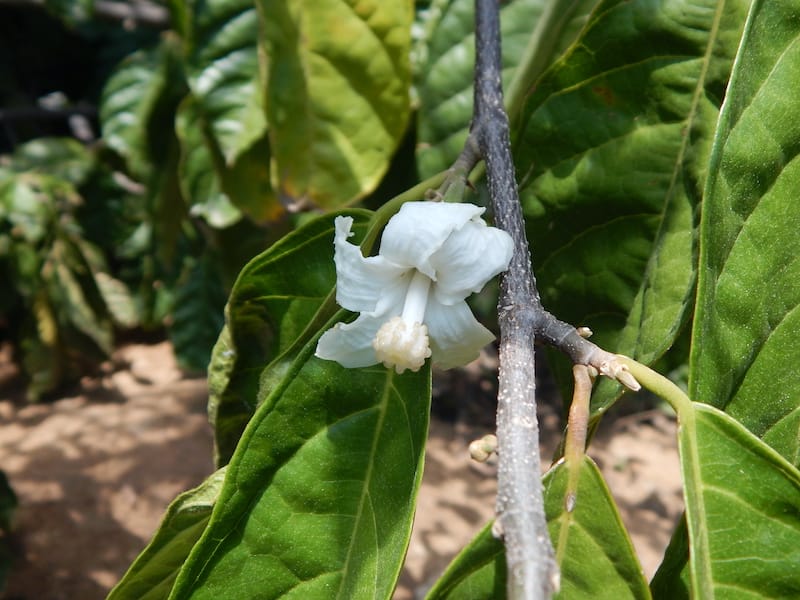
Tejate, now so closely associated with the fragrant flavors of cacao and flowers, is said to have very humble origins. In centuries past – and, in some areas, to this very day – any Oaxacan home would have a well-used metate, a gently curved milling vessel carved from volcanic stone and used to process nixtamalized corn into the masa dough that forms the basis of Mexico’s daily bread: tortillas. It’s thought that after a morning’s work, washing down the metate with water, some thrifty women thought to catch the cloudy, corn-y runoff in a jar, using it as a thirst-quencher instead of tossing the stuff away. When the Spaniards – with their insatiable craving for any-and-everything chocolate – arrived, cacao was likely worked into the improvised drink, along with, at some point, the mamey pit and the flowers.
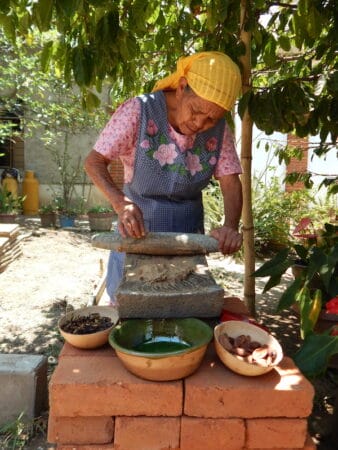
Although tejate is found across Oaxaca state, the drink is most closely associated with San Andrés Huayapam, the small, hilly village located about five miles north of Oaxaca City, where female residents have been preparing it for generation after generation – right up to today. Makers including Rodriguez create the paste in the morning – these days typically toting the ingredients to an electric mill in order to avoid all the elbow grease the metate demands – then fanning out, with their paste, to points across the city and in neighboring towns, diluting the paste at their point of sale and serving the drink throughout the morning and early afternoon hours.
This is how it’s been since time immemorial, according to Virginia Rita López, 84, of Huayapam. As so many little girls did – and continue to – López learned the art of tejate-making from her mother, starting from about the age of 12. López, who currently sells tejate each weekend at the Reforma neighborhood’s Pochote market, still grinds her paste by hand on her stone metate, no small feat at her advanced age. She recalls, in the 1950s and ‘60s, accompanying her mother, on foot, to the market in Santa Cruz Xoxocotlán – a distance of some eight miles.
“It would take us three hours to walk there – and three to walk back,” she tells us as we sit around the kitchen table at the home she’s shared with husband Pedro Domingo Santiago, 87, also of Huayapam, since 1962. When the couple married, López struck out on her own, selling her tejate in the village of San Agustín Yatareni, a more manageable 45-minute walk from Huayapam. These days, the pair ride to the Pochote market together in comparative comfort, taking a 15-minute taxi both ways.
López, too, learned to make tejate from her mother, who learned to make it from hers, and so on and so forth throughout the ages. Santiago’s mother also made and sold tejate, and her mother before that. The couple can’t name exactly how far back the family tradition goes: when asked, Santiago gestures with his hand, waving back over his shoulder to indicate the many, many years. “Generations back,” he says simply.

Happily for tejate lovers, the drink appears to be just as popular today as it has been throughout history. The frothy beverage can be found across Oaxaca City, dished out within the four walls of city markets as well as from little street stalls that set up shop in front of churches, gas stations, and banks. In spite of the abundance of native, indigenous drinks ranging from fruity, fermented tepache to warming, filling corn atole, the convenience – and sweetness – of bottled soft drinks continues to encroach upon the Mexican diet: for many years now, this country has topped the world list of soda consumption per capita. But in Oaxaca, tejate continues to hold its own, with the sight of locals clutching a jícara – or, just as often, a disposable plastic cup – remaining extremely common. The caloric drink, rich with healthy unsaturated fats, has historically been a filling beverage that men who worked physical jobs tending the land would tuck into their bags alongside tamales and other masa snacks as fuel for the day. While today’s city dwellers might no longer need to adopt this strategy, they still seem to love the drink and all that it offers.
“Tejate definitely gives me more energy than any other beverage,” Rodriguez tells us as she pours out a jícara for her neighbor at the market, who’s busy filling a plastic bag with sweet rolls for a customer. And while fewer men might rely on tejate to fuel a long day of work in the fields, many women continue to make the drink for the urban populace they serve. Rodriguez’s 27-year-old daughter learned from her and accompanied her at the market until recently, when she had a baby, and of Santiago and López’s three daughters (out of 11 children), all three prepare the drink; one, a lawyer during the week, joins her parents at their weekend market stall; another has her own stall in the nearby region of the Mixteca; and a third, a housewife, regularly mixes tejate for her family.
“Even our granddaughters know how to make it,” Santiago remarks with pride. “The legacy continues on.”
Lauren RothmanLauren Rothman
Published on June 06, 2023
Related stories
July 1, 2013
ShanghaiNothing beats an alfresco summer meal in Shanghai, yet it’s not easy to find a Chinese restaurant that offers outdoor seating. While Chinese people prefer to shelter under umbrellas during the hottest months, Shanghai’s sun-worshipping expats flock to patios and terraces – most of them located in Western-style establishments. So the opening last summer of…
January 15, 2020
Istanbul | By Dalia Mortada
IstanbulPerhaps nowhere else is it clearer that as many as one million Syrians have settled down in Istanbul than in the city’s historic Fatih district. The neighborhood is home to the city’s immigration headquarters (Fatih Emniyet), and the backstreets leading up to it are among the most transformed, since Syrians and other new arrivals end…
January 8, 2013
IstanbulWe are proud to announce that Saveur has included the Culinary Backstreets: Istanbul iPhone app in its “Saveur 100: Travel Edition” list, published in the magazine’s January/February 2013 issue. Saveur praised the app’s “smart search functions, integrated maps and vivid photos,” calling it “the ideal portable portal to one of our all-time favorite food cities.”…







































